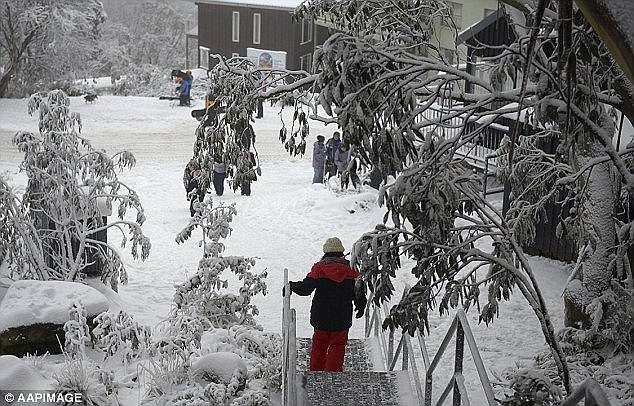
© AAP IMAGEIn the early hours of Sunday morning Australia's south east was swept with feverishly cold temperatures
PLUMMETING temperatures have caused freezing conditions and snow across the country - and more severe weather is coming.
A FREEZING cold snap has blanketed parts of the country in fluffy white snow.
Australians have packed on the layers as
icy chills continue to blow across southeast Australia thanks to the cold front that's been pushing through the Great Australian Bight since Wednesday.
Severe weather warnings have been issued for parts of New South Wales today as strong gusty winds with cold temperatures and showers are forecast.The Bureau of Meteorology said a complex low over the Tasman Sea was directing a "vigorous westerly airstream" over NSW ahead of a south to south-westerly change which would move along the coast today.
Damaging winds averaging 60 to 65km/h are predicted with peak gusts of more than 90km/h.
A south to south-westerly wind change is forecast to move along the coast, reaching the Hunter coast by late morning.
Showers may bring damaging wind gusts along the coastal fringe in areas including Gosford, Newcastle, Sydney and Wollongong.


Comment: